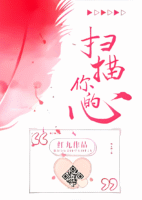I Have A Store C194
by MarineTLChapter 194: The Problem Zhang Yan Encountered
After finishing the meal, Zhou Yimin stayed with Zhang Yan for a while.
Auntie Zhang dragged the meddling Zhang Lu and Zhang Yu out of the room, leaving the space to her daughter and son-in-law. She couldn’t be more satisfied with this son-in-law.
Zhang Jianshe took that box of mangoes outside.
“I’m heading out for a bit.”
He planned to use this box of mangoes to trade for an old hydroelectric generator for Zhou Yimin, under a legitimate pretense, and have it delivered to Zhoujiazhuang.
Let Zhoujiazhuang, rather than Zhou Yimin himself, receive it.
That way, even if someone were to investigate in the future, it would be traced back to Zhoujiazhuang’s collective, and wouldn’t have much to do with his son-in-law.
“Be careful.”
Knowing her husband was doing this for their son-in-law, she didn’t try to stop him—just reminded him to be safe.
Although Zhou Yimin was alone in a room with his Fiancee, it wasn’t the kind of scene people might imagine. Influenced by her father, Zhang Yan was also pursuing a technical major in university.
“You guys are already working on this kind of research?” Zhou Yimin couldn’t help asking after looking at it for a while.
First-year students already doing research?
Zhang Yan’s subject of research was the electric lamp.
Some might say, haven’t light bulbs already been invented? What’s there left to study?
In reality, the electric lights used in the country at present still weren’t great—never mind the high energy consumption, their lifespans were also short.
From what Zhou Yimin knew, it wasn’t until 1959, just last year, that the United States developed the halogen tungsten lamp. It probably hadn’t reached China yet.
In ordinary incandescent bulbs, the high temperatures of the filament cause the tungsten to evaporate. The evaporated tungsten deposits on the bulb’s inner surface, turning it black.
But halogen tungsten lamps eliminate this blackening by using the halogen cycle principle.
Zhang Yan nodded. “Mm! This is our group’s research project for the semester. Don’t underestimate the electric lamp—it actually involves a lot of knowledge.”
“I know,” Zhou Yimin said with a nod of agreement.
Ordinary bulbs mainly consist of the glass envelope, filament, lead wires, stem, and base.
The glass envelope is made in a spherical shape from heat-resistant glass. It separates the filament from the air, allowing light to pass through while providing protection. When operating, the glass surface of an incandescent bulb can reach up to around 100°C.
The filament is made from tungsten wire thinner than a hair, shaped into a spiral.
It may look short, but if you stretched out that super-thin coiled tungsten wire into a straight line, it’d be over a meter long.
The two lead wires seem simple on the surface but are actually composed of an inner wire, Dumet wire, and outer wire.
The inner wire conducts electricity and holds the filament, made from copper or nickel-plated iron. The short red section in the middle is Dumet wire, which must bond tightly with the glass without leaking air. The outer wire is copper, used to connect the bulb base to the power supply.
The trumpet-shaped glass part is the stem, which connects to the bulb and holds the metal components in place.
The bulb base connects the lamp to the socket and the power supply, secured to the glass with solder.
“You’re trying to replace the filament material to extend the bulb’s lifespan?” Zhou Yimin asked.
Looking at Zhang Yan’s notes, he more or less guessed what they were trying to do.
“Yes! It’s not just about extending the lifespan—did you notice? Tungsten evaporates and makes the bulb black. If we change the material, would that change?” Zhang Yan said.
Replacing the filament material was a consensus among their research group.
So far, they’d done several experiments and tried over a dozen materials, but none of them had achieved the desired results.
Worried that Zhou Yimin might not understand, Zhang Yan explained further.
Like carbon filaments, tungsten filaments in incandescent lamps also react poorly to air.
If the bulb were filled with air, once powered on and the tungsten filament heats up past 2000°C, the air would attack it relentlessly, causing it to burn out quickly while producing a yellow-white substance—tungsten trioxide—that clings to the inside of the bulb and its components.
“So the black stuff inside the bulb is actually tungsten trioxide, caused by air,” Zhou Yimin said.
Zhang Yan blinked. What he said made sense, so she nodded. “Exactly!”
“Then instead of changing the material, why not deal with the air? Just remove the air from inside the bulb,” Zhou Yimin suggested.
He tilted his head slightly. “To be precise, it’s the oxygen in the air that’s the problem. Just get rid of the oxygen.”
All you need to do is coat a bit of red phosphorus on the stem of the bulb. When heated, red phosphorus turns into white phosphorus, which easily reacts with oxygen to form solid phosphorus pentoxide, consuming the oxygen in the process. That way, even trace oxygen left in the bulb would be eliminated.
Zhang Yan looked stunned.
“Yimin, that’s exactly what we’re doing now. But you have to understand, completely evacuating the air—or more precisely, the oxygen—from a bulb is still beyond the capabilities of current domestic technology and manufacturing processes,” Zhang Yan said with a smile.
“To deal with this, people overseas already tried injecting nitrogen into the bulb,” she continued.
If the bulb were a perfect vacuum, once the tungsten filament heats up, the tungsten atoms would become hyperactive and break away from the filament en masse, bouncing around chaotically like no one was watching—until they hit the inner surface of the bulb and stuck.
But if you fill the bulb with nitrogen, a thin protective layer of stable gas forms around the incandescent filament.
Every nitrogen molecule becomes a brave little soldier, stationed near the tungsten filament, standing firm against any rogue tungsten atoms trying to escape. They push the atoms back into position, forcing them to return to work and keep shining.
This significantly reduces the evaporation rate of tungsten, which gave rise to nitrogen-filled incandescent bulbs.
With gas inside, the tungsten evaporates more slowly, and under the same usage period, the filament can operate at a higher temperature. Thus, gas-filled bulbs are more efficient than vacuum bulbs.
“Then what if we injected some other element—something that, under high temperatures, would cause the evaporated tungsten to reattach to the filament?” Zhou Yimin subtly guided Zhang Yan toward the halogen tungsten lamp principle.
The principle behind halogen tungsten lamps is simple. Under proper temperature conditions, the tungsten that evaporates from the filament reacts with halogen gases near the bulb wall to form volatile tungsten halide compounds.
Since the bulb wall is hot enough, these tungsten halides remain in a gaseous state. When they diffuse back to the hotter area near the filament, they break back down into halogen and tungsten. The tungsten returns to the filament, and the halogen continues cycling through the process.
Some so-called “advanced technology,” when broken down, really isn’t all that mysterious.
“Reform into tungsten filament?”
The boldness of the idea startled Zhang Yan.
They had never even thought of trying that.
But Zhang Yan was smart. She quickly realized this could be a feasible direction.
“Yes! Yimin, your brain is incredible!”
(End of Chapter)










0 Comments